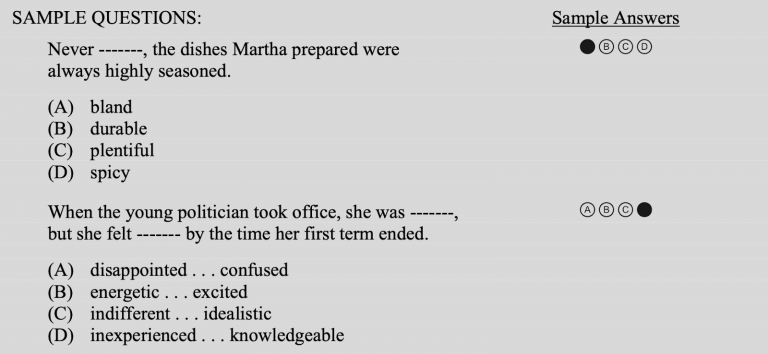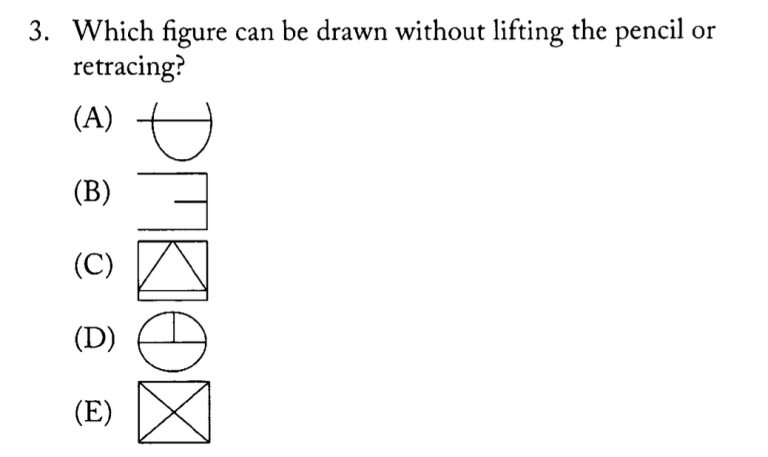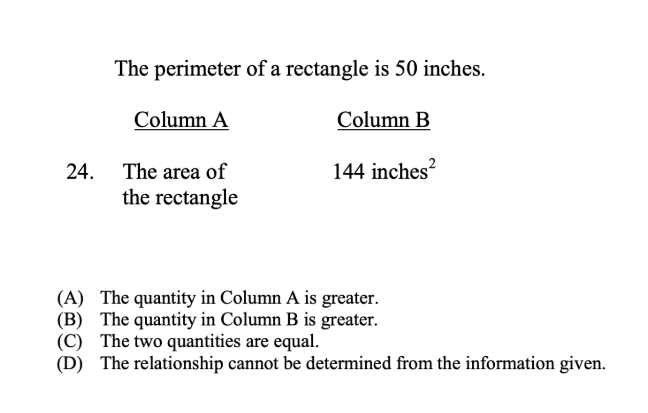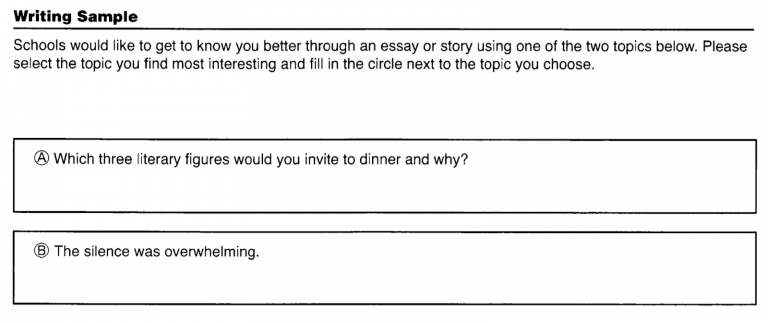SSAT vs. ISEE: 4 Key Differences

Parents looking to help their child gain admission to competitive international and boarding schools, or even prestigious summer programs, should understand the strategic importance of tests like the Secondary School Admission Test (SSAT) and the Independent School Entrance Exam (ISEE).
These exams both serve as critical tools that assess a student’s academic readiness. As such, strong scores can be a key factor in improving your child’s chances for success in highly selective admissions processes.
Despite being similar in purpose, these standardized tests differ in significant ways. Furthermore, choosing the right exam depends on several factors, including a student’s strengths and the schools they are applying to.
Below, you’ll find an overview of all levels of the SSAT and ISEE, plus a detailed breakdown of the most important differences—all aimed to help you decide which one is the best fit.
Overview
The SSAT is administered at three different levels:
- Elementary Level (EL): For students in grades 3-4 applying to grades 4-5.
- Middle Level (ML): For students in grades 5-7 applying to grades 6-8.
- Upper Level (UL): For students in grades 8-11 applying to grades 9-12.
All levels feature four sections, plus one ungraded writing sample that is sent to schools.
The time limits and number of questions for all graded sections at each level can be seen here (not including approved accommodations).
| Section | EL 2 hours, 5 minutes |
ML/UL 3 hours, 10 minutes |
|---|---|---|
| Quantitative 1 | 30 questions 30 minutes | 30 questions 25 minutes |
| Quantitative 2 | N/A | 30 questions 25 minutes |
| Verbal | 30 questions 20 minutes | 60 questions 30 minutes |
| Reading | 28 questions 30 minutes | 40 questions 40 minutes |
The ISEE, on the other hand, is offered at four levels:
- Primary Level: For students applying to grades 2-4.
- Lower Level (LL): For students applying to grades 5-6.
- Middle Level (ML): For students applying to grades 7-8.
- Upper Level (UL): For students applying to grades 9-12.
The Primary Level is further split into three sublevels—one for each grade covered—and there are small differences with regard to content and time limits. For example, the Primary 2 test is the shortest test but also contains an Auditory Comprehension section that the others do not. More on these differences can be found here.
Below is a convenient way to see how the other three levels compare.
| Section | LL 2 hours, 20 minutes |
ML/UL 2 hours, 40 minutes |
|---|---|---|
| Verbal Reasoning | 34 questions 20 minutes | 40 questions 20 minutes |
| Quantitative Reasoning | 38 questions 35 minutes | 37 questions 35 minutes |
| Reading Comprehension | 25 questions 25 minutes | 36 questions 35 minutes |
| Mathematics Achievement | 30 questions 30 minutes | 47 questions 40 minutes |
Other logistical differences between the SSAT and ISEE may arise on a case-by-case basis. These include whether the test will be taken
- at home or at a testing center
- digitally or on paper
- during a particular testing season or simply any time before a deadline
It’s also common for a school to accept only the results of one exam and not the other. As such, for students and their families who are already set on applying to a specific list of schools, there may be no question about which test to take.
For those students who do have a choice between the tests, it’s worth taking an extended look at the most significant differences when it comes to the tests themselves.
1. Guessing Strategies
The first significant distinction lies in how the tests handle guessing.
SSAT
The SSAT includes a guessing penalty: for every incorrect answer, one quarter of a point is subtracted from the total score.
As a result, test-takers need to decide carefully whether to guess or skip a question. A correct guess can earn a valuable point, but a wrong guess might lower the score compared to leaving it blank.
Additionally, the SSAT provides five answer choices (A – E) per question, which slightly increases the difficulty of eliminating wrong options.
ISEE
On the other hand, the ISEE adopts a no-penalty policy for incorrect answers, encouraging students to attempt every question.
With only four answer choices (A – D) per question, the odds of guessing correctly improve.
This fundamental difference means students taking the ISEE can adopt a more aggressive answering strategy compared to the SSAT.
2. Verbal Sections
Both the SSAT and ISEE assess verbal reasoning, but the content and emphasis of these sections differ significantly.
SSAT
The SSAT Verbal section places a stronger focus on vocabulary, requiring test-takers to demonstrate knowledge of both synonyms and analogies.
The synonym-based problems are fairly straightforward: students are presented with a word and must find the word that is closest in meaning.

The analogies section, however, challenges students to understand relationships between pairs of words, which is a unique test of critical thinking skills.

ISEE
The ISEE Verbal section prioritizes synonym recognition as well, but it places no emphasis on analogies. Instead, the ISEE’s format focuses on context-based language comprehension in the form of sentence completion problems

As a result, studying for the SSAT’s Verbal section is more likely to involve extensive memorization of advanced vocabulary, while ISEE prep often focuses more on understanding word usage within specific contexts.
3. Math Sections
The math sections of the SSAT and ISEE also differ in structure and emphasis.
SSAT
The Middle and Upper Level SSAT divide quantitative questions into two separate sections and feature a mix of algebra, geometry, and arithmetic.
Some questions also incorporate logic and require creative problem-solving, as in the one below.

ISEE
The ISEE math section includes both a Quantitative Reasoning and a Mathematics Achievement portion. The former is further divided into two subsections. One focuses on word problems like this one

The other section focuses on quantitative comparisons like this one:

Overall, the ISEE places a stronger emphasis on practical application than the SSAT.
4. Writing Samples
As noted in the overview, each exam requires students to complete an ungraded writing sample. However, just because it is not scored like other sections doesn’t mean that students shouldn’t take it seriously.
Since the writing sample is sent to schools, it represents a great opportunity for students in all grades to showcase their writing skills and personality through an original narrative or expository composition.
SSAT
The Elementary Level SSAT asks younger students to complete a simple prompt that consists of a sentence starter. Students are then expected to finish the story creatively and with a sense of narrative cohesion.
At the Middle and Upper Levels, students are given a choice between two prompts: one creative and one expository option. These options allow students to select the format that best suits their strengths and therefore offer insights into their personality and problem-solving approach. Here’s what the beginning of a paper test writing section looks like:

ISEE
As for the ISEE, students at all levels are given one expository-style prompt. This is usually a question or statement requiring personal reflection, opinion, or analysis.
Younger students are often asked to describe experiences or preferences, while older students may encounter prompts requiring them to analyze abstract ideas or defend a position. Here’s an example from an official mock:

Conclusion
So which test is the best choice? Students and their families should take a few things into account before making a decision:
- Study Timeline: Students with a shorter preparation timeline may find the advanced vocabulary and analogy-based questions on the SSAT particularly challenging. That said, those who can participate in intensive group classes can quickly acquire many of the essential strategies for success within a condensed timeframe.
- Strengths and Preferences: Some students may feel that the SSAT allows them to display creative writing abilities in a way the ISEE doesn’t. Conversely, others may prefer the more familiar content of the ISEE’s Math section questions.
- Test Taking Experience: Because the ML and UL SSAT penalize guesses, students who have extensive testing experience are often better able to balance (and take advantage of) the risk-reward scenarios presented by the SSAT’s unique scoring system. Students who frequently need to make educated guesses on standardized tests often feel less pressure taking the ISEE.
- Mock Test Performance: The closest thing to a real exam is an official mock test. As a result, many students who are unsure of which test is right for them take mocks of both and then evaluate the results. Contact us at support@tokyoacademics.com to schedule a free, in-person mock.
What should international school students do next?
For international school students, it’s important to know that no matter where you are on your academic journey, there is a strategic course of action available to help you achieve your admissions goals. Tokyo Academics has over 10 years of experience helping students get the grades, test scores, essays, and other factors needed to gain admission to top schools around the world. Connect with us today to see how we can help you get into the boarding schools and colleges of your dreams!
Looking for More International School Guidance?
Visit our Resource Center and gain access to recorded webinars, podcast episodes, school profiles, and more.
